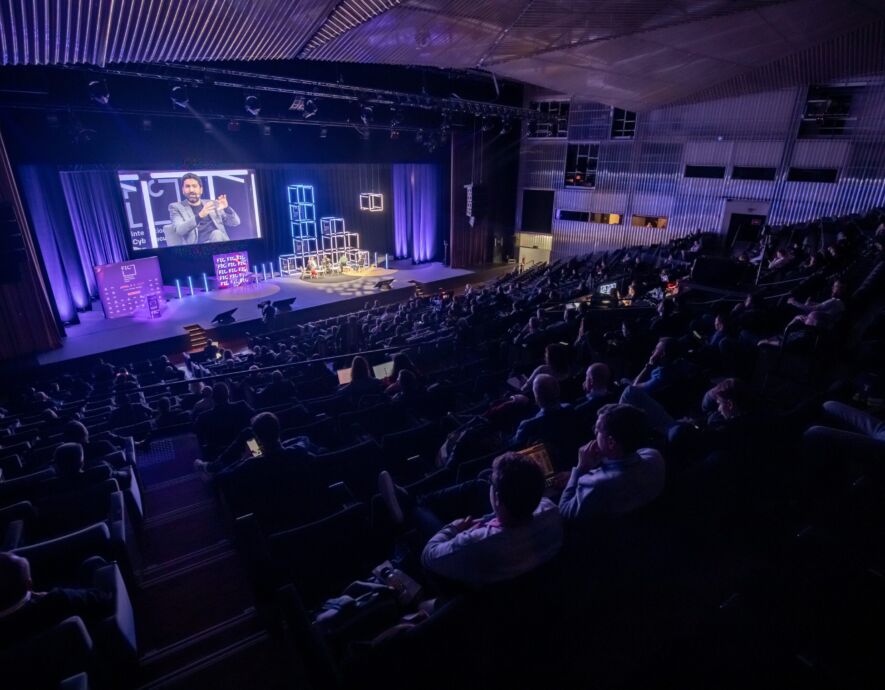

By Henri d’Agrain, Managing Director of the Centre for Advanced Studies of Cyberspace (CHECy)
For the last few months, we have been hearing more and more about the blockchain technology. What is meant by this abstruse term, unknown to most of us a year ago? In early 2015, there were almost no publications available on this subject, which was essentially reserved for geeks and individuals enticed by the prospect of easy money. Since July of the same year, blockchain news has exploded. The subject has relentlessly gained momentum, and now few would admit that it does not figure among their priorities. The blockchain has even received the recognition of The Economist in the newspaper’s 31 October 2015 piece « The Trust Machine. »
In 2008, a mysterious developer, or perhaps a group, calling itself Satoshi Nakamoto published the blockchain protocol under an MIT open-source licence in a software program written in C++. This protocol offers a particularly elegant and clever solution to address the problem of the trust model in a digital environment between people who do not know each other and who cannot trust each other beforehand. In 2009, the same Satoshi Nakamoto launched the first application based on the blockchain protocol to create the cryptocurrency Bitcoin. While the underlying protocol is adorned with many virtues, poor Bitcoin is saddled with a bad reputation — one that is, in our opinion, unwarranted. The fact that it may be used in illegal activities does not invalidate the suitability of the model, or else this should be the case for all trusted currencies. In fact, Bitcoin is the first successful experiment in developing a decentralised consensus platform, and its remarkable robustness for the last seven years, in the absence of any regulatory authority, must be analysed. The Bitcoin algorithm incorporates its own regulation. Published in 2000, Lawrence Lessig’s famous article « Code Is Law » found an archetype in the Bitcoin blockchain. Moreover, a professor of finance at the University of California, Los Angeles, asked by the Sveriges Riksbank to suggest nominations for the Nobel prize in economics, did not err in offering the name of Satoshi Nakamoto for the 2016 advancement of candidates for the prestigious distinction.
The blockchain may be defined as a decentralised and comprehensive history of all the transactions made since its creation, which are recorded therein by consecutive blocks in a large ledger. The security of a transaction is ensured by a peer-to-peer network of computers that validate and certify the transaction before definitively registering it in a block. Once registered, this block becomes tamper-proof and easily verifiable. The blockchain protocol combines elements of two theories, information technology theory and game theory. From information technology theory, it implements peer-to-peer network technologies on the one hand and cryptology on the other hand. From game theory, it borrows the notion of « Nash equilibrium in dominant strategy. » Moreover, game theory is the source of the blockchain protocol’s main innovation in offering a radical solution to the problem of trust between two stakeholders who do not know each other.
Beyond Bitcoin, it is very likely that the blockchain protocol, and decentralised consensus technologies in general, will cause a real upheaval of the Internet in the coming months and years. It finds a variety of applications when it comes to registering and certifying a transaction, exchange or identification. Two qualities of this protocol confer its exponential nature upon it: on the one hand, it is extremely generic and neutral; on the other hand, it is perceived to be perfectly scalable, that is, founded on mainly fixed cost bases, allowing fast, economically viable ramping-up and growth in activity volumes. The main point of the blockchain protocol is to significantly reduce the costs of transactions between economic agents by allowing them to avoid the need for a trusted third party.
The fields of application of the blockchain are manifold. For the last several months, experiments and attempts have been developing in many directions. Blockchain technology may be used for transactions that go beyond a simple payment or registration transaction and contain much more complex instructions, for example conditional and programmable instructions. This refers to contracts. These contracts are published to a blockchain to run automatically under certain conditions; hence the expression « smart contracts » is used. Ethereum, a company co-founded by Vitalik Buterin, offers a framework for creating « smart contracts. » To make a simple comparison, the Ethereum source code is like the operating system of a smartphone. Based on this code, various applications, written more simply, may be developed by users to draw up « smart contracts. »
The reflections to which we may be led by the blockchain phenomenon and the uses of this protocol relentlessly plunge us into abysses of perplexity, in particular because our world and the legal frameworks that structure it seem to us ill-suited to rolling them out. Major paradigm shifts appear to be inevitable. They will happen in a manner that is either deliberate and controlled, or erratic and completely out of control. They will happen either in France as a tool for future growth and creation of the jobs of tomorrow, or elsewhere in more favourable regulatory environments.
The remarks made on 9 November 2015 by French Minister of Economy, Industry and Digital Affairs Emmanuel Macron, in front of digital economy players, apply in every respect to the blockchain phenomenon as we are seeing it: « The digital revolution and new technologies are profoundly transforming our economy. If we fail to anticipate these transformations, we condemn ourselves to being at their mercy. If, on the contrary, we prepare for them, we turn them into an opportunity. » We share in every respect this ambition to turn France into a « blockchain nation. » France has every advantage to achieve this in the coming months, in particular if the public authorities choose to create conditions favourable to the emergence of projects and their funding. A tremor can be felt. Will it be enough?
About the Centre for Advanced Studies of Cyberspace (CHECy)
Founded as a non-profit organisation, CHECy is a high-level training programme for executives and managers from the public and private sectors. The training content uses a multidisciplinary approach to focus on the challenges of digital transformation and digital culture. This programme’s design draws inspiration from the tested and acclaimed educational model of the French Institute for Advanced Studies in National Defence (IHEDN). It allows executives and managers to apprehend the digital revolution in its manifold dimensions and understand its dynamics. Open to around 30 selected participants, the nationwide session lasts 10 months, from September to June, every Friday except school holidays.
Complete information on www.checy.org
the newsletter
the newsletter



